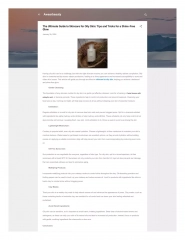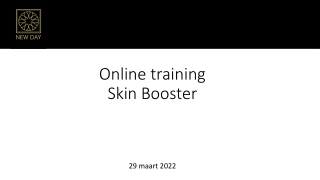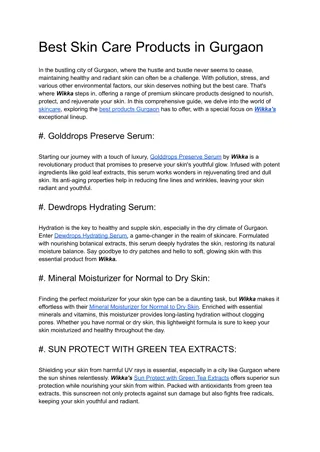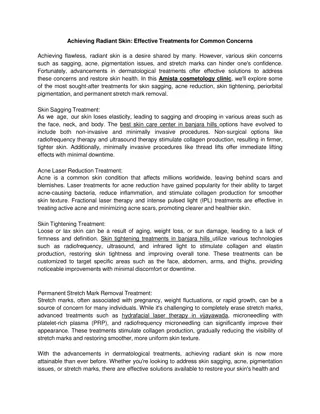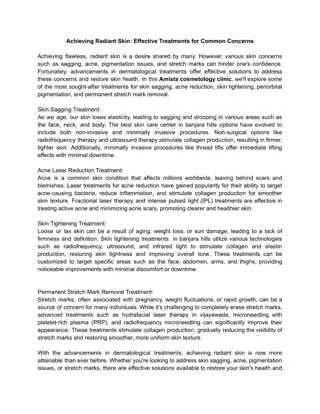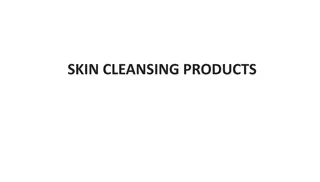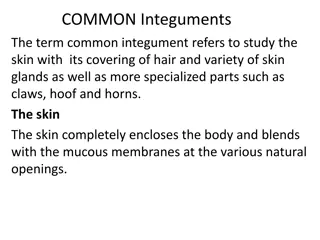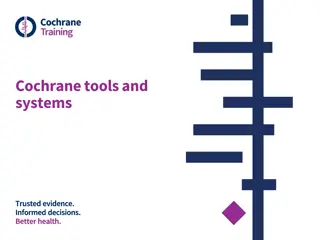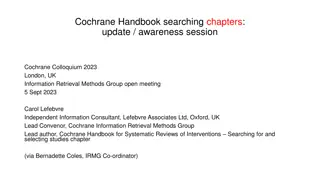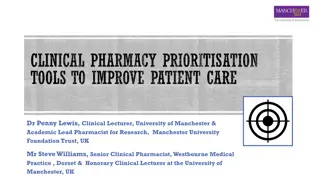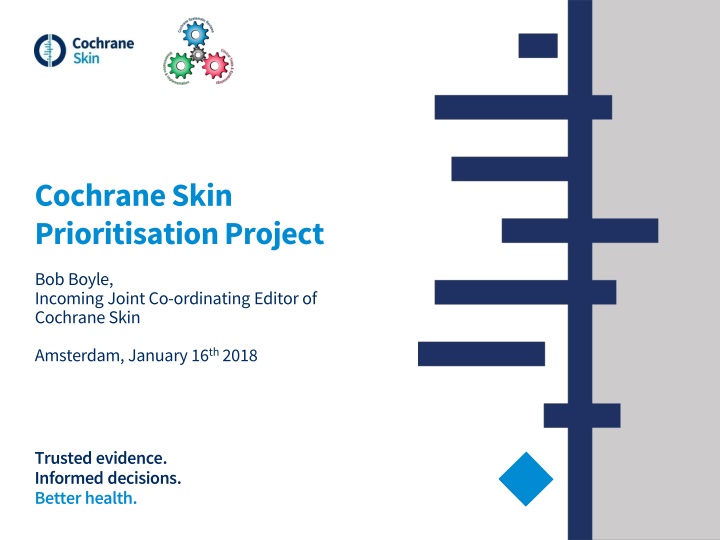
Cochrane Skin Prioritisation Project
Decreasing potentially misleading conclusions, Cochrane Skin prioritizes systematic review titles for better healthcare decisions. With a focus on methodological quality, the project aims to enhance the reliability of evidence-based dermatology research, contributing to improved health outcomes worldwide.
Download Presentation

Please find below an Image/Link to download the presentation.
The content on the website is provided AS IS for your information and personal use only. It may not be sold, licensed, or shared on other websites without obtaining consent from the author. If you encounter any issues during the download, it is possible that the publisher has removed the file from their server.
You are allowed to download the files provided on this website for personal or commercial use, subject to the condition that they are used lawfully. All files are the property of their respective owners.
The content on the website is provided AS IS for your information and personal use only. It may not be sold, licensed, or shared on other websites without obtaining consent from the author.
E N D
Presentation Transcript
Cochrane Skin Prioritisation Project Bob Boyle, Incoming Joint Co-ordinating Editor of Cochrane Skin Amsterdam, January 16th2018 Trusted evidence. Informed decisions. Better health.
Title Prioritisation Project Why do we need to prioritise Cochrane systematic review titles? Cochrane Skin prioritisation process 2017 Outcomes of the 2017 prioritisation project Future plans
Title Prioritisation Project Why do we need to prioritise Cochrane systematic review titles? Cochrane Skin prioritisation process 2017 Outcomes of the 2017 prioritisation project Future plans
Systematic Review Landscape 22 SRs are published each day, >8000 per year 3-fold increase between 2004 and 2014 15% are Cochrane reviews (20% in 2004) 55% are therapeutic 25% epidemiology 11% diagnosis/prognosis 52% from China , UK or USA PLOS Medicine 2016;13(5):e1002028
Cochrane Skin Reviews as a % of all Dermatology Systematic Reviews 1000 Total Number of SRs Cochrane as % of Total 100 Number per year 10 1 2003 to 2007 2010 2015 Year 2016 2017
Quality of Systematic Reviews 38% published in good journals (IF 5) i.e. 27% of non- Cochrane reviews 2% published in a leading journal (IF>15) General increase in quality e.g. specified primary outcome (37% in 2004, 48% in 2014 for non-Cochrane reviews) PLOS Medicine 2016;13(5):e1002028
Systematic Review Threats 40% have potentially misleading conclusions, due to not taking into considerations the limitations of the studies included in the review Estimated 67% of SRs have at least one overlapping review published within 3 years BMJ. 2013;347:f4501. pmid:23873947 PLOS Medicine 2016;13(5):e1002028
Cochrane vsNon-Cochrane Reviews Methodological quality of Cochrane vsNon-Cochrane Reviews of Therapeutic Interventions PLOS Medicine 2016;13(5):e1002028
Cochrane vsNon-Cochrane Reviews Methodological quality of Cochrane vsNon-Cochrane Reviews of Therapeutic Interventions PLOS Medicine 2016;13(5):e1002028
Cochrane 2020 Our vision is to refine our review production systems so that they are able to produce high quality, relevant reviews more rapidly and efficiently; and to create an environment anda more integrated, flexible organizational structurethat provides maximum support and opportunities for our most precious resource our contributors.
Title Prioritisation Project Why do we need to prioritise Cochrane systematic review titles? Cochrane Skin prioritisation process 2017 Outcomes of the 2017 prioritisation project Future plans
CSG Prioritisation Process 2017 Title suggestions Summarise results Top 10 ranking by Editors
Priority Title Suggestions Professional societies Guideline development groups Healthcare commissioners CSG membership Consumers and consumer organisations Disease-specific priority setting exercises e.g. JLA partnerships, guideline recommendations for future research
Summarising Title Suggestions GBD top 15 conditions
Top 10 Ranking by Editors Diseases ranked highest if on GBD top 15 conditions, and not well represented in CSG reviews (Dellavalle 2014 review) Scored 10 for top ranked, 1 for lowest ranked, and summed scores Final list reviewed by editorial base, with respect to ongoing titles and number of reviews that could be supported
Title Prioritisation Project Why do we need to prioritise Cochrane systematic review titles? Cochrane Skin prioritisation process 2017 Outcomes of the 2017 prioritisation project Future plans
Final Priority Title List 7 priority titles : 1. 2. 3. prevention of skin cancer (review) Treatments for severe drug reactions (protocol) Interventions for alopecia areata (update) Educational programmes for the primary All ongoing and will be supported as priority reviews
New Priority Titles 1. Ibero-American Cochrane Centre 2. Network meta-analysis of topical eczema treatments Singapore Cochrane Centre 3. Network meta-analysis of systemic eczema treatments Malaysian Cochrane Centre 4. Interventions for folliculitis and boils. Taiwan Cochrane Centre Interventions for pruritus of unknown cause
Timeline for priority titles November 2018 winning teams announced Deadline for protocol acceptance for peer review: 16th March 2018 Protocol peer review and publication: 18th May 2018 Deadline for SR acceptance for peer review: 17th May 2019 Total review production time: just over 18 months
Title Prioritisation Project Why do we need to prioritise Cochrane systematic review titles? Cochrane Skin prioritisation process 2017 Outcomes of the 2017 prioritisation project Future plans
Cochrane 2020 Our vision is to refine our review production systems so that they are able to produce high quality, relevant reviews more rapidly and efficiently; and to create an environment anda more integrated, flexible organizational structurethat provides maximum support and opportunities for our most precious resource our contributors.
Cochrane Structure & Function Review CSG will become one of 8 review groups in the Long-term conditions and ageing network Back and neck ENT Eyes and Vision Musculoskeletal Oral Health Pain, Palliative and Supportive Care Skin Wounds
Less reviews, higher priority No routine updates of existing reviews Updates more targeted Reviews and protocols submitted to CSG which are not ready to go out for peer review are given one opportunity to revise More complex methods support from Cochrane Faster editorial turnaround and publication times
Prioritisation updates New review titles/suggestions always welcome Urgent priority reviews will be assessed by the editorial team at their weekly meeting Other suggestions will be reviewed annually Formal prioritisation process will be repeated every 2-3 years likely late 2019
Cochrane 2020 Cochrane cannot afford to commit resources to reviews which are low-impact or extensively delayed Focussed on supporting rapid delivery of a smaller number of high priority reviews New methodologies DTA, IPD, NMA etc Cochrane Skin is now part of a network of 8 Cochrane groups long term conditions and ageing

